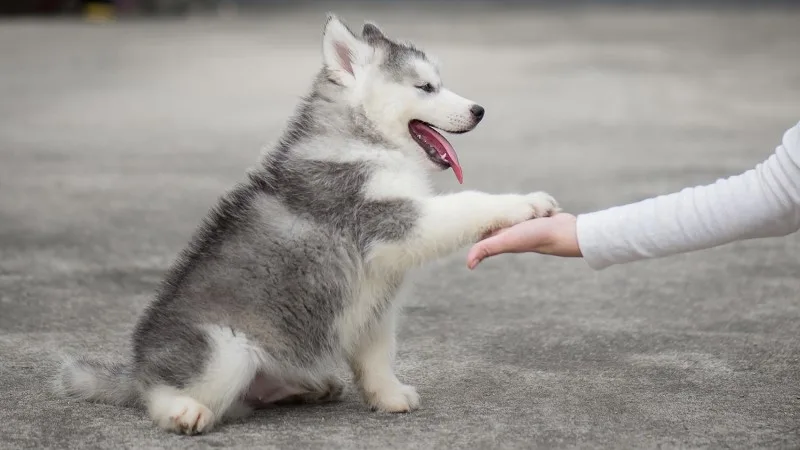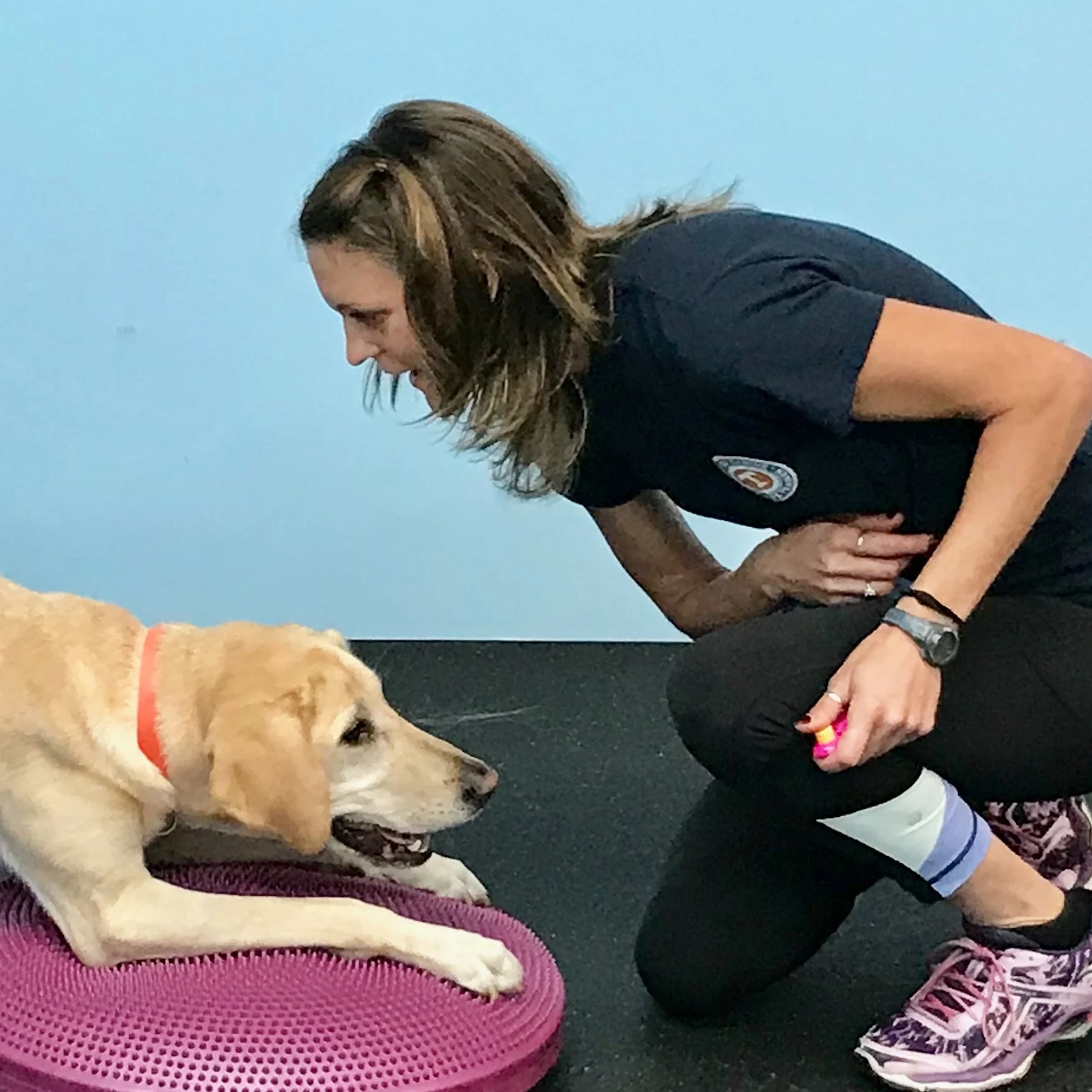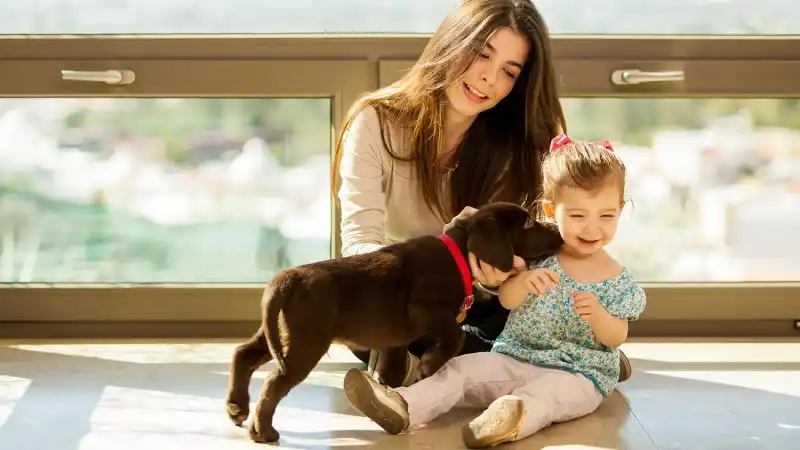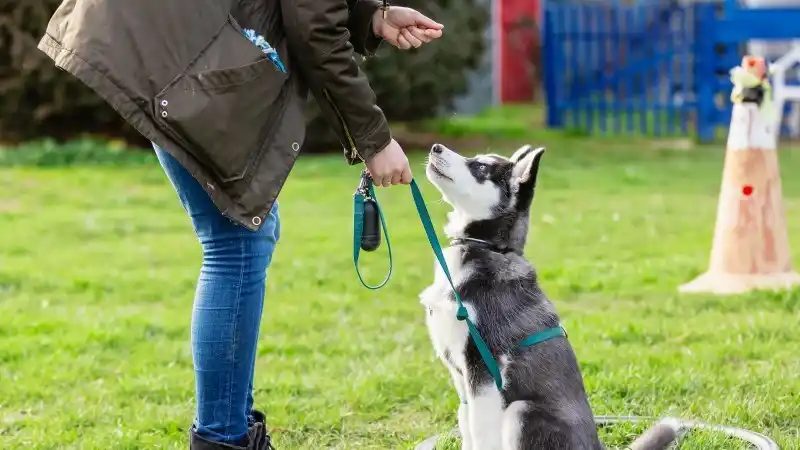Exercise Routines for Dogs of All Ages
Your dog's age impacts how they should be exercising and what types of routines they should do. Find out if you're doing all you can to keep your pup fit.

You can add variety to your training routine and use fitness activities with dogs of all ages, but it’s important to cater exercise to your dog’s age and ability level. Exuberant, growing puppies and outstanding oldsters have different needs and bodies than an athletic adult dog. Read on for key considerations for different life stages.
Puppies and Adolescents
Puppies and adolescents - the dog equivalent of teenagers - have special needs for exercise because they are still growing!
The big term you often hear is “growth plates.” Growth plates are the soft areas, called epiphyseal plates, on the ends of long bones. Until fully developed into denser bone, growth plates can be vulnerable to injury and damage from impact. A veterinarian could radiograph your dog’s growth plates to determine if they are closed and ready for adult exercise.
What should you avoid doing with puppies? Avoid repetitive and/or endurance movements - such as distance running or doing high-paced, long distance walks on concrete - until their growth plates are closed. Skip doing balances for long durations on unstable surfaces, such as exercise discs, until your pup is grown as well.
Exercises for Young Dogs
Work on fitness and obedience skills on the flat. Work on sits, downs, stands, sphinx downs, and other skills on the floor, but not on balance exercise equipment.
Walk on different surfaces and create obstacle courses. For those of you who love balance equipment, you can set up a short obstacle course by setting up objects in a row and having your dog walk across them in a controller manner. This will teach your pup proprioception and give them confidence on different surfaces. It also won’t cause any physical damage, because you won’t hold any positions on the balancing surfaces for long periods of time.
Younger dogs also have shorter attention spans, so just use 10-30 pieces of kibble as treats per training session and end the session when you’re out of kibble. You can do multiple sessions during the day, but give a couple of hours for a “mental break” between sessions. Using this “train until the kibble is gone” method will also help to ensure that you don’t overdo the number of repetitions in one session.
Adult Dogs
Your adult dog could be a couch potato, an exuberant hound with endless energy, or even a performance dog who competes in sporting events. What should you consider in all cases?
Fun Exercises for Adult Dogs
Cater to your dog’s fitness level. Start slowly with only a few repetitions and short exercise sessions. If your dog is already fit, they’ll be able to do more than a dog who is just getting back into their fitness routine.
If your dog is high-spirited and moves rocket fast, concentrate on slow, controlled movements so your dog learns body awareness. Front and rear leg targeting and shaking are especially great for awareness and control.
Seniors
Your dog could be considered a senior at age 7 and up, depending on their size and breed. Sometimes, senior dogs are in better physical shape than younger dogs. However, keep in mind that exercises that are easy for younger dogs may be more difficult for seniors.
Safe Exercises for Older Dogs
Seniors need fewer repetitions (the number of times you do an exercise in a row) and less frequency (the number of times a week you practice or the number of sets your dog does) than younger dogs do.
Old dogs LOVE to learn new tricks. You can do fitness skills at varying levels of difficulty based on the surface you use - a carpeted floor, a foam dog bed, a foam pad, an exercise disc, and so on.
They will likely need a longer recovery time between exercises and exercise sessions than a younger dog would require.
Older dogs naturally lose proprioception and muscle mass as they age – just as humans do. It’s so important to do these exercises in accordance with what your dog needs, so find a balance that’s just right. Don’t overdo it or your dog will be sore. Don’t slack or you’ll lose the skill and the muscle. Talk to your veterinarian if you have any questions about doing too little or too much.
These exercises can be tweaked for any age or skill level. Don’t forget to do your warm up and cool down too! Remember, it's important to cater your exercise to the age of your dog, just as it's important to cater your dog's pet insurance coverage to the different stages of their life.

Every Dog and Cat Deserves the Pet Insurance of Champions
Get prize-winning care for your pets.

Jasey Day holds the Certified Canine Fitness Trainer (CCFT) credential through the University of Tennessee. She is a member of the Bobbie Lyons K9FITteam - a team of compassionate canine fitness instructors who actively teach others and continually expand their own knowledge. Since 2004, Jasey has taught a variety of workshops and classes on the following: Puppy, Canine Good Citizen/Family Pet, Advanced Family Pet, Canine Fitness, Canine Swimming, Rally, and Agility. In addition, Jasey has earned over 60 titles in Dock Diving, Agility, Rally, CGC and Trick Dog. Jasey has worked full time for the American Kennel Club since 2007 and teaches at Care First Animal Hospital in Raleigh, NC. Jasey’s Labrador Retrievers spend their free time hiking, training, and snuggling with Jasey.
READ MORE ARTICLES

